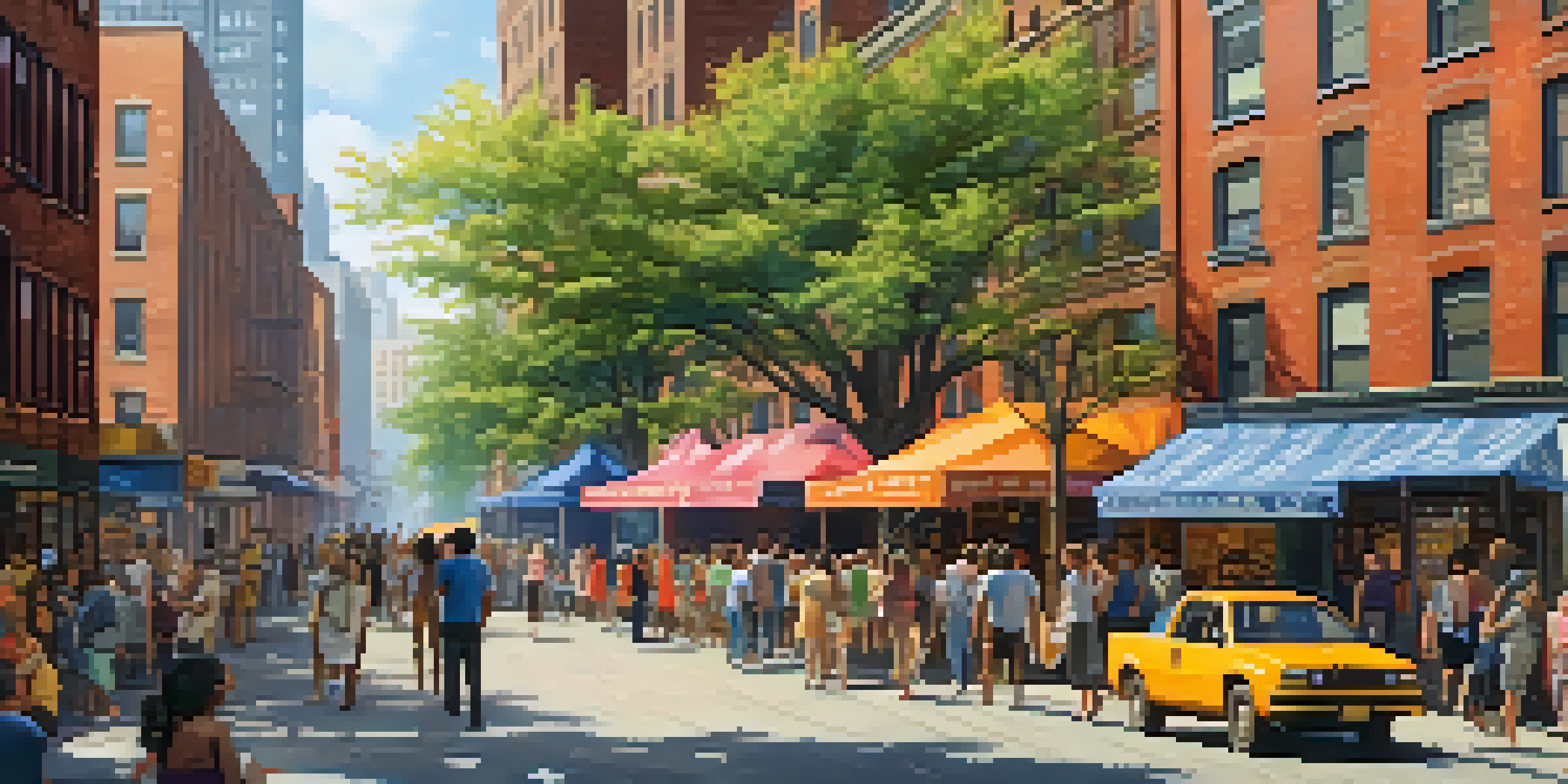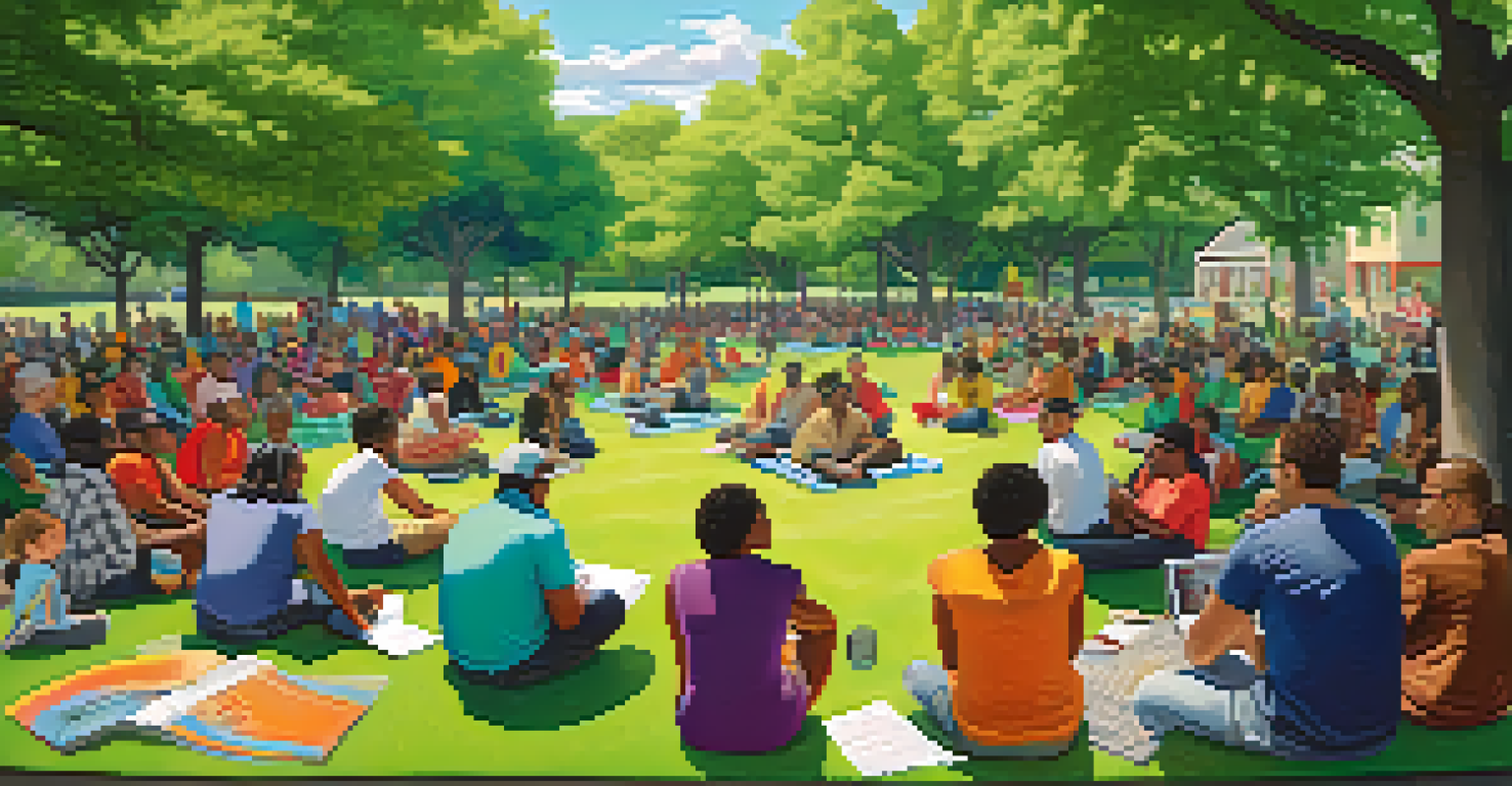The Impact of Gentrification on NYC's Affordable Housing Market

Understanding Gentrification: A Double-Edged Sword
Gentrification refers to the process where urban neighborhoods undergo transformation, often marked by an influx of wealthier residents. While this can lead to improved infrastructure and amenities, it also raises concerns about the displacement of long-time residents. The delicate balance between revitalization and preservation is crucial in understanding the broader implications of gentrification.
Gentrification is often seen as a double-edged sword; it can breathe new life into a community while simultaneously erasing its history and culture.
As neighborhoods become more desirable, property values increase, leading to higher rents that can price out existing inhabitants. This can create a cycle where original residents are forced to move, often to less desirable areas. Consequently, the rich cultural fabric of these neighborhoods can be lost, leaving behind a homogenized community.
To grasp the impact of gentrification, it's essential to recognize its roots in economic development. While the intention may be to enhance living conditions, the outcomes often reveal an urgent need for policies that protect affordable housing and support local communities.
The Historical Context of NYC's Affordable Housing
New York City has a rich history of diverse neighborhoods, shaped by waves of immigration and socioeconomic shifts. Affordable housing has long been a cornerstone of the city's identity, providing homes for countless families. However, historical policies, such as redlining and urban renewal, have also contributed to housing disparities that persist today.

In the 1970s and 1980s, many neighborhoods underwent significant changes due to economic downturns, leading to abandoned buildings and declining populations. This created opportunities for developers seeking to capitalize on low property prices. As the city began to recover, these neighborhoods attracted new residents, igniting the gentrification phenomenon.
Gentrification Displaces Long-Term Residents
As wealthier individuals move into urban neighborhoods, original residents often face rising rents and are forced to relocate, leading to the loss of community and cultural heritage.
Understanding this historical context is crucial for addressing current challenges. It helps illuminate why certain areas are more susceptible to gentrification and the importance of preserving affordable housing amidst these changes.
Gentrification's Economic Impact on Housing Prices
One of the most visible effects of gentrification is the dramatic increase in housing prices. As wealthier individuals move into an area, demand for housing spikes, resulting in skyrocketing rents and property values. This can push affordable housing options further out of reach for low- and middle-income families.
The greatest challenge of our time is ensuring that the benefits of growth are shared by all, not just the privileged few.
For example, neighborhoods like Williamsburg and Bushwick in Brooklyn have seen rents soar, leading to a significant shift in the demographic landscape. Long-standing residents often find themselves unable to afford their homes, forcing them to relocate. This creates a ripple effect, impacting local businesses and community services that rely on those residents.
The economic implications of this trend extend beyond individual families; they also affect the local economy. As communities change, the types of businesses that thrive may shift, often prioritizing boutiques and upscale dining over traditional shops and services that cater to long-term residents.
Social Consequences of Displacement in Gentrifying Areas
Displacement due to gentrification can lead to significant social consequences for affected communities. When long-term residents are forced to leave their homes, they lose their social networks, support systems, and cultural heritage. This can create a sense of loss and disconnection for those displaced.
Moreover, the influx of new residents can alter the community's character and dynamics. Long-standing traditions and events may fade away, replaced by new, often unfamiliar, practices. This shift can lead to tensions between newcomers and original residents, as each group navigates their place in the changing community.
Historical Context Shapes Housing Crisis
New York City's history of immigration and economic shifts has created a complex landscape of affordable housing challenges that continue to influence gentrification today.
Addressing the social consequences of gentrification requires a commitment to inclusivity. Efforts to engage both new and existing residents in community planning can help foster a sense of belonging and ensure that the needs of all are considered.
Legislation and Policy Responses to Gentrification
In response to the challenges posed by gentrification, various policies and legislative measures have been proposed to protect affordable housing. Rent control, zoning regulations, and inclusionary housing policies are some examples aimed at maintaining a diverse population. However, the effectiveness of these measures often varies.
For instance, rent stabilization laws in NYC have provided some protection for tenants, but loopholes and enforcement issues can undermine their effectiveness. Additionally, new developments can sometimes circumvent these regulations, further exacerbating the housing crisis.
To truly combat the adverse effects of gentrification, policymakers must be proactive and innovative. Community input and collaboration are vital in crafting solutions that not only preserve affordable housing but also promote equitable development.
Community Initiatives: Fighting for Affordable Housing
Grassroots organizations and community initiatives have emerged as powerful advocates for affordable housing in gentrifying neighborhoods. These groups often work tirelessly to raise awareness about the impacts of gentrification and push for policy changes. Their efforts can empower residents to voice their concerns and advocate for their needs.
One successful example includes community land trusts, which enable residents to collectively own and manage land for affordable housing. This model not only protects housing from market forces but also fosters a sense of community ownership and pride. By prioritizing residents' needs over profit, these initiatives can create more equitable housing solutions.
Community Initiatives Foster Affordable Housing
Grassroots organizations are crucial in advocating for affordable housing, empowering residents, and creating inclusive solutions amidst the pressures of gentrification.
Ultimately, community initiatives play a crucial role in the fight against gentrification. By fostering collaboration and engagement, they help ensure that the voices of existing residents are heard and considered in the development process.
The Future of Affordable Housing in NYC: A Balancing Act
Looking ahead, the future of affordable housing in New York City remains uncertain amidst ongoing gentrification. Striking a balance between development and preservation is essential for maintaining the city's diversity and vibrancy. Without thoughtful strategies, the very character of these neighborhoods could be at risk.
As more people flock to NYC for its opportunities, the pressures on housing will only intensify. This reality underscores the importance of innovative, inclusive approaches to urban planning that prioritize affordable options for all residents. Collaboration among government, developers, and communities will be key in shaping a sustainable housing landscape.

By fostering dialogue and understanding, stakeholders can work together to create environments where both new and existing residents can thrive. The challenge lies not in halting progress but in ensuring that it benefits everyone.